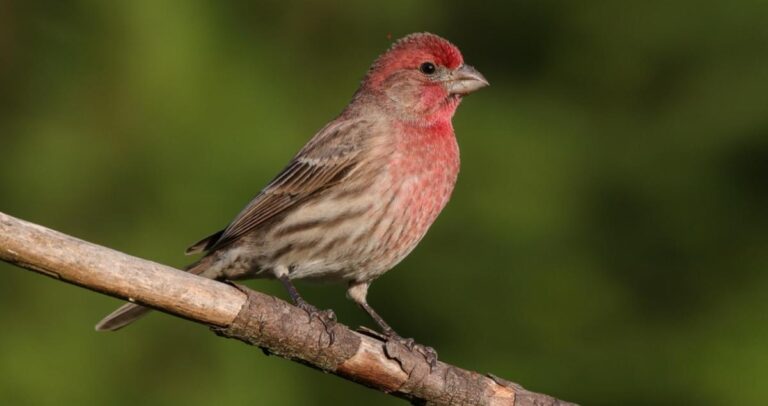Can You Eat Cardinals: Understanding Cardinals and Their Legal Protection
Cardinals, often recognized by their bright red feathers, are a fascinating species of bird native to the eastern part of North America.
These birds are known for their vibrant color and beautiful songs, making them a favorite among bird watchers.
Cardinals are non-migratory birds, meaning they stay within their habitat all year round. This habitat ranges from woodlands and swamps to gardens and shrublands.
The cardinal bird is a symbol of vitality and beauty. Their striking red color is more pronounced in males, while females sport a more subdued shade of brown or olive, often with red highlights.
Cardinals are also known for their distinctive crest, a feature not common in many bird species.
Predators of Cardinals
Despite their beauty and charm, cardinals are not exempt from the circle of life. They have a variety of predators that pose a significant threat to their survival.
Some of the predators that eat cardinals include:
- Large birds such as hawks and owls
- Various mammals like raccoons, foxes, and domestic cats
- Certain reptiles, including snakes
Cardinals, like many other bird species, have developed several strategies to protect themselves from these predators.
One of their primary defense mechanisms is their ability to fly quickly and maneuver through dense vegetation, making it difficult for predators to catch them.
Moreover, the bright red color of the male cardinal bird acts as a distraction to predators. While the predator focuses on the male, the female and the young ones can escape.
This is a classic example of diversionary tactics in the animal kingdom.
Cardinals also use their strong, sharp beaks as a means of defense. They can deliver painful pecks to any predator that gets too close.
Lastly, cardinals are known to be very territorial, especially during the breeding season. They will aggressively defend their nests from any intruders, including potential predators.
In the next section, we will delve into the legal protection offered to cardinals and why it is illegal to hunt or eat them.
Legal Protection of Cardinals
Cardinals, like many other bird species, are protected under various laws and regulations.
In the United States, the Migratory Bird Treaty Act (MBTA) is a significant piece of legislation that provides protection to cardinals.
Despite their non-migratory nature, cardinals are included in the MBTA due to their ecological importance and the need for their conservation.
The MBTA makes it illegal to pursue, hunt, take, capture, kill, or sell birds listed therein.
The Act extends to the bird’s parts, nests, and eggs, meaning it is illegal to disturb or destroy a cardinal’s nest or eggs.
Violating these laws can lead to severe consequences. Penalties can range from hefty fines to imprisonment, depending on the severity of the violation.
For instance, a violation of the MBTA can result in a fine of up to $15,000 or six months imprisonment.
Why is Eating Cardinals Illegal?
The prohibition on eating cardinals is directly linked to their legal protection under the MBTA. Since the Act makes it illegal to kill or capture cardinals, it implicitly makes it illegal to eat them as well.
The reasons behind this legal protection are manifold. Firstly, cardinals, like all wild birds, play a crucial role in our ecosystem.
They help control pest populations, pollinate plants, and disperse seeds.
Disrupting their population by hunting or capturing them for food can have detrimental effects on our environment.
Secondly, bird conservation efforts aim to protect all bird species, regardless of their population status.
While cardinals may not be endangered, they are still subject to threats from habitat loss, climate change, and predation. Legal protection ensures their survival and well-being in the face of these threats.
Lastly, ethical considerations also play a part in this prohibition. Many people believe that hunting or capturing wild birds for food is inhumane and unethical.
This sentiment is particularly strong for beautiful and beloved birds like the cardinal, which many people enjoy watching and listening to in their natural habitats.
In the next section, we will explore the edibility of cardinals and the ethical considerations surrounding this topic.
The Edibility and Ethical Considerations of Eating Cardinals
Can You Eat Cardinals?
From a purely biological perspective, cardinals, like any other bird, are edible. Their meat, like that of other birds, is composed of proteins, fats, and other nutrients that can be consumed by humans.
However, the question of whether you can eat cardinals is not just about their edibility but also about legal and ethical considerations, as discussed in the previous sections.
From a health perspective, it’s important to note that wild birds can carry diseases that can be transmitted to humans if not properly cooked. This includes various forms of avian flu, which can be severe or even fatal in some cases.
Therefore, even if it were legal to eat cardinals, it would be crucial to ensure that the meat is thoroughly cooked to kill any potential pathogens.
Can You Eat Cardinal Eggs?
Cardinal eggs, like the eggs of most bird species, are also technically edible. They contain proteins, fats, and various vitamins and minerals.
However, cardinal eggs are quite small compared to commonly consumed bird eggs like chicken or duck eggs. Therefore, they would not provide as much nutritional value.
Moreover, as with adult cardinals, the eggs are protected under the Migratory Bird Treaty Act. This means it is illegal to disturb, damage, or remove cardinal eggs from their nests.
Ethical Considerations of Eating Cardinals
Beyond the legal and health considerations, there are also ethical implications to consider when discussing the consumption of cardinals.
Many people believe that it is morally wrong to kill and eat wild birds, especially those that are not typically considered game birds.
Public opinion on this matter tends to lean towards the protection and conservation of wild birds. This sentiment is particularly strong for species like the cardinal, which is beloved for its beauty and song.
Many people derive joy from observing these birds in their natural habitats, and the idea of killing them for food is seen as unnecessary and cruel.
Furthermore, there is a growing movement towards more ethical and sustainable eating practices.
This includes a focus on reducing harm to animals and protecting biodiversity. In this context, the consumption of cardinals, or any wild birds, is seen as contrary to these principles.
Alternatives to Eating Cardinals
While the consumption of cardinals is both illegal and ethically questionable, there are many other birds that can be legally and ethically consumed.
Domesticated birds like chickens, turkeys, ducks, and geese are raised for their meat and eggs, and their consumption is widely accepted.
Game birds such as quail, pheasant, and grouse are also legally hunted and consumed in many places. These birds are often managed through hunting regulations to ensure their populations remain sustainable.
It’s important to remember that any hunting or consumption of wild animals should be done responsibly, with respect for the animals and the ecosystems they inhabit.
Final thoughts
While cardinals are technically edible, their consumption is illegal under the Migratory Bird Treaty Act. This law, along with ethical considerations and potential health risks, makes eating cardinals a poor choice.
Instead, we should appreciate these beautiful birds for their vibrant colors and melodious songs, and do our part to protect them and their habitats.
FAQs
Yes, it is illegal to own cardinals in the United States under the Migratory Bird Treaty Act. This law protects cardinals and many other bird species from being captured or killed.
Yes, some larger bird species, such as hawks and owls, are known to prey on cardinals.
In addition to large birds, cardinals are also preyed upon by various mammals, including raccoons and domestic cats, and certain reptiles like snakes.
The average lifespan of a cardinal in the wild is about 3 years, but it can live up to 15 years under optimal conditions.


